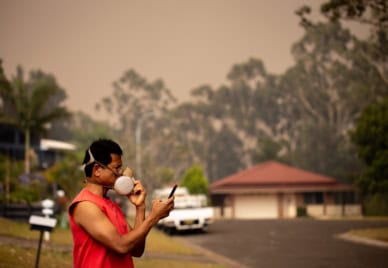
Aggregating and Integrating Data on Health Outcomes Associated with Bushfires at a National Scale
Exploreabout Aggregating and Integrating Data on Health Outcomes Associated with Bushfires at a National Scale
Improving health and social infrastructure for all Australians is an ongoing challenge for urban and regional planners and decision makers. Data is crucial to informed and evidence-based decision-making however we lack a national data asset with the health indicators required to enable this.
The Australian Urban Health Indicators (AusUrb-HI) project is developing a suite of new indicator data assets to help improve health and social infrastructure planning in urban and regional Australia.
The project integrates Population Health Research Network (PHRN) Health Outcomes Data with Australian Urban Research Infrastructure Network (AURIN) Health Determinants data, including demographic, socioeconomic, health service and environmental data. This improves the understanding of the health of Australian urban and regional populations.
De-identified data is being integrated in the Secure Unified Research Environment at the Sax Institute to deliver new insight by linking health outcomes and their determinants for improved health planning and decision making.
The project involves 3 elements:
Working with the Australian Cancer Atlas, AusUrb-HI will develop indicators quantifying the association between demographic, socioeconomic, health services and environmental determinants to the incidence and survival rates for major types of cancer for urban and regional areas across Australia.
AusUrb-HI will develop a population heat health vulnerability indicator that combines data on population demographics, socioeconomic characteristics, health and environmental conditions in order to understand the locations of greatest population vulnerability to current (and potentially future) extreme heat events.
In collaboration with the RMIT Centre for Urban Research, AusUrb-HI will generate indicators that give new insight into the liveability of Australian urban and regional areas from a health perspective.
The new indicators and metrics will provide invaluable insight to data-driven and evidence-based policy-making and planning in local, state and commonwealth health and social infrastructure planning departments. This will lead to improved health outcomes such as more liveable neighbourhoods, improved health services, more targeted interventions, a reduction in preventable diseases and a reduction in the economic costs associated with preventable diseases in Australia.
Researchers, research organisations, government agencies (state and federal), urban and regional planners, data analysts will benefit from the project’s core features: